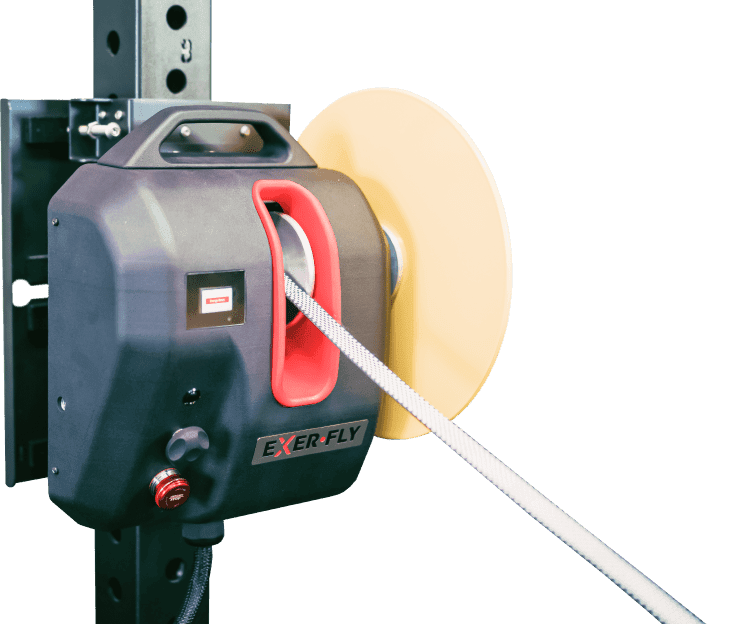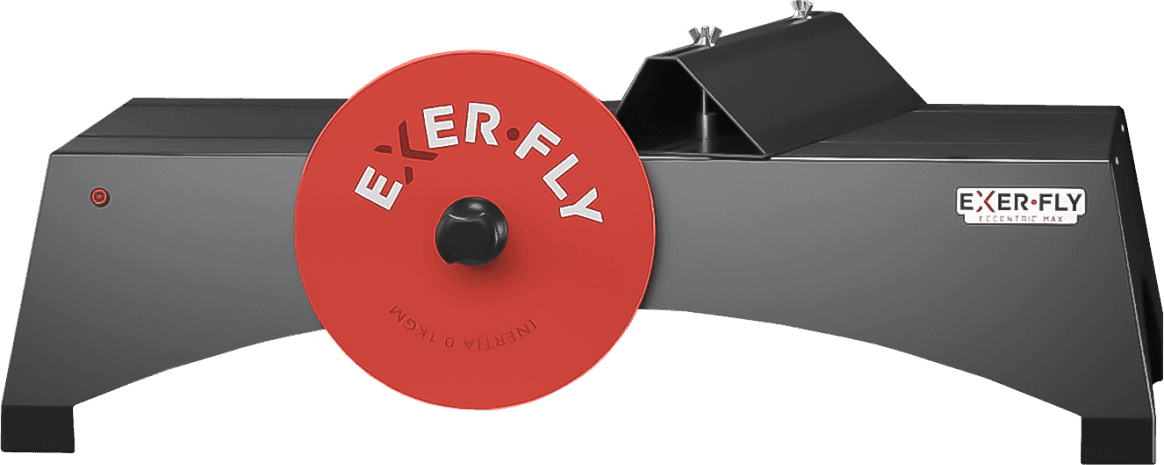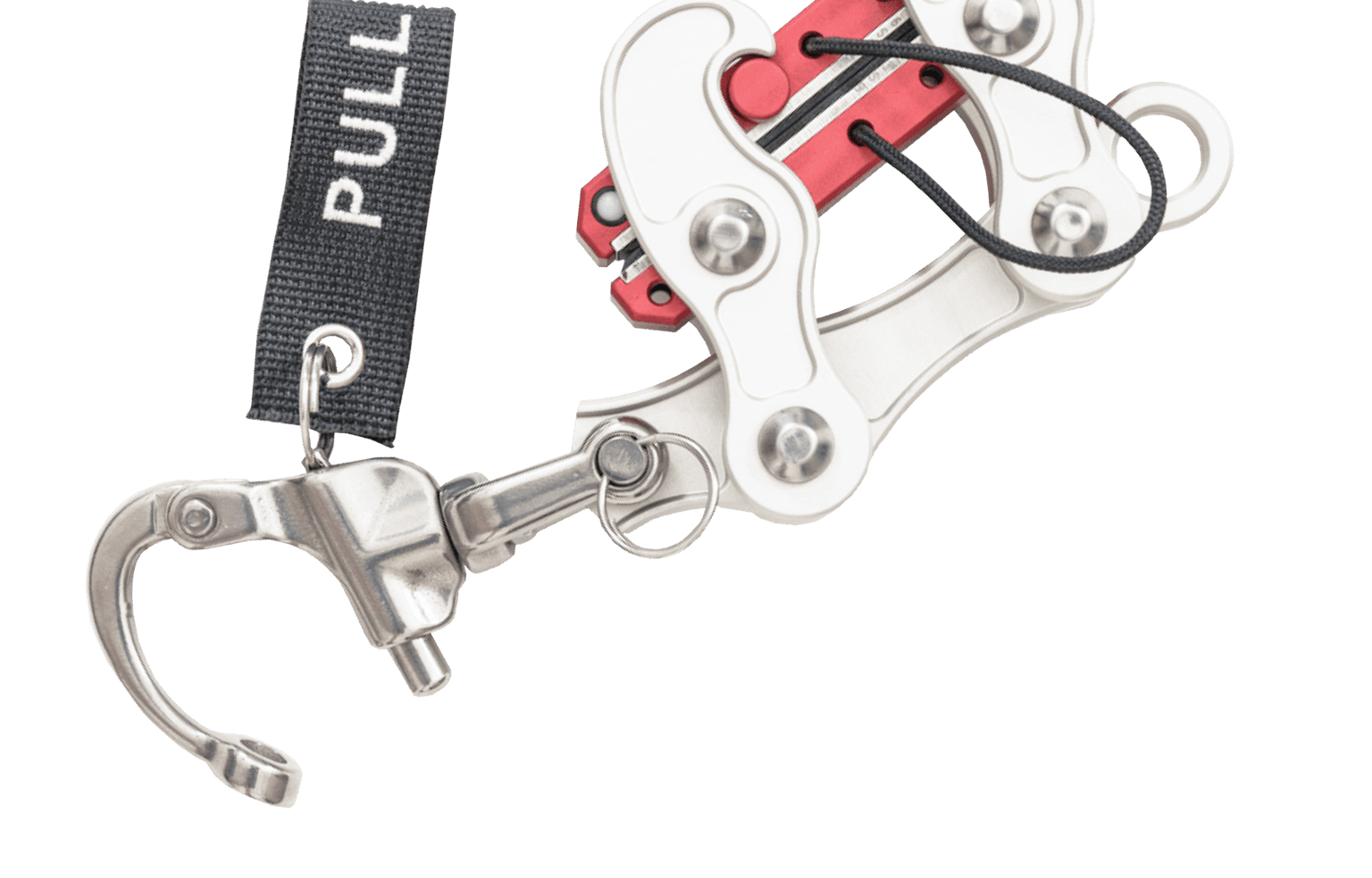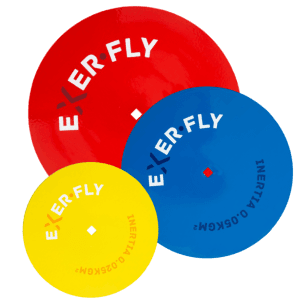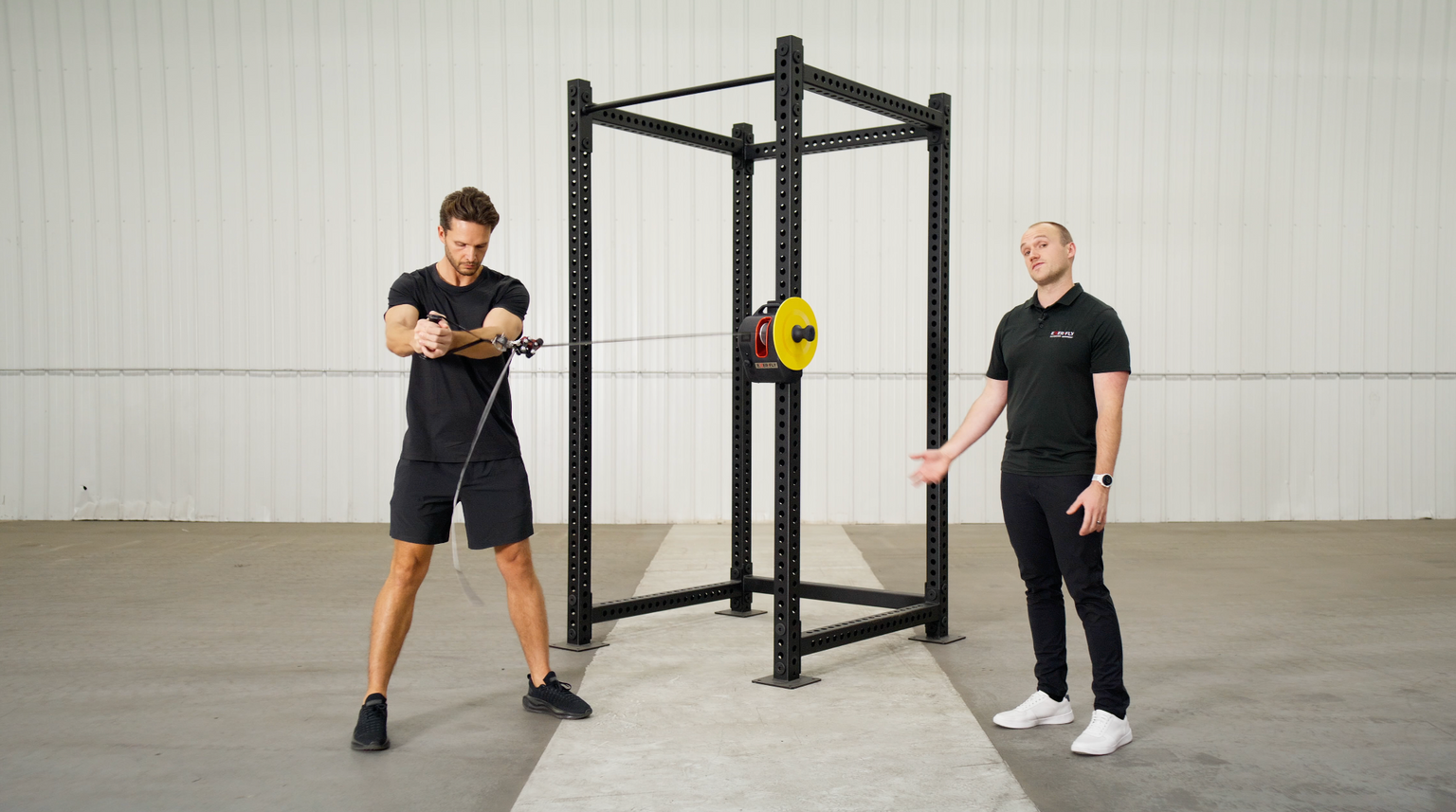
Rotational Training with the Exerfly Rack Fly: Flywheel Resistance Training
Key Points
- The unique loading capabilities and versatility of the Rack-Fly combined with the feedback from the Exerfly App can help address gaps in how rotational athletes and movement patterns are trained.
- Training the trunk and upper body with high inertial loads addresses several limitations in the training for high-velocity rotational sport. This includes exposure to high rotational loading safely and effectively and developing a foundation of concentric and eccentric strength.
- Low inertia, high-velocity training provides a rapid eccentric stimulus that is hard to replicate with other methods. This high-velocity eccentric loading can promote numerous adaptations that underpin speed and power of the upper extremity and trunk.
- Regardless of loading strategy, maximal intent is critical for rotational athletes to get the most out of their training. The velocity feedback from the Exerfly App offers an accurate and convenient feedback tool.
- A combination of objective and subjective evaluation across multiple inertial loads can provide valuable insights into the relative strengths and weaknesses of an athlete, and how they apply different movement strategies against various eccentric demands.
Introduction
One of the unique benefits of flywheel resistance training (FRT) is the ability to load multi-directional movement patterns across the force-velocity relationship. For this reason, it is not surprising that FRT has been well adopted within sports where explosive rotational actions are required, such as baseball, golf, and tennis.
The unique loading and versatility offered by FRT can complement many of the more traditional approaches to training rotational athletes, while also helping to address some of the common limitations in the training of rotational movement patterns.
In this blog, I am going to focus on 4 ways that FRT with the Exerfly Rack Fly can bring a lot to the table when training rotational athletes.
High Inertia Rotational Training
It is common for rotational training to be either underloaded or mostly focused on the velocity side of the force-velocity relationship when compared to other movement patterns. While velocity-focused training with medicine ball throws and other methods can be valuable, it is also important to target high-force/strength oriented rotational loading as well! This can provide a foundation of muscle strength and tissue robustness/resilience which can prepare rotational athletes for the explosive demands of their sport in the short and long-term.
By adding larger size and/or numbers of flywheels to the Rack-Fly, you can shift the focus towards higher force production to overcome the high inertial load.
The high force emphasis provided by high inertia FRT provides several unique advantages for rotational training.
- The resistance offered by FRT requires a strong and consistent effort throughout the entire concentric range of motion, without sticking points or gravitational dead spots.
- As the rope unwinds completely, the momentum of the flywheel(s) will cause it to rewind back in the opposite direction. This means all that work done during the concentric phase will provide a strong eccentric challenge to contend with on the way back.
- Anecdotally, I’ve found that high inertia FRT promotes solid loading into the ground to overcome the inertial load. Especially when you also cue for loading from the ground up and transferring energy through the kinetic chain.
High-Velocity FRT
In addition to high inertia training, there are benefits from training at the opposite end of the inertial load-velocity spectrum. By using low inertial loads, you can take advantage of the benefits of performing high-velocity FRT exercises!
Power and speed training are often acceleration-focused, but the benefits of rapid eccentrics are underappreciated. Rapid eccentric training can drive neural and muscle-tendinous adaptations that are beneficial for speed and power, such as increased neural drive, fast-twitch muscle fiber hypertrophy and composition, tendon stiffness, etc. (1). Plus, delivering that rapid eccentric stimulus via FRT has added benefits of challenging concentric speed and power and the ability to rapidly transition between eccentric and concentric muscle actions!
Check out the video for some examples. During each exercise, the rapid concentric action accelerates the flywheel to fast speeds, which in turn requires a rapid braking action as the rope quickly rewinds in the opposite direction.
- The seated row is an excellent option for both upper body speed, while also providing a rapid trunk stabilization challenge due to the unilateral loading.
- The standing rotational exercise is just one of nearly endless ways to load rotational patterns with fast FRT!
If you are looking for a unique and explosive stimulus for building speed and power, give fast FRT a try!
Driving Intent with the Exerfly App
Regardless of the loading strategy used, performing exercises with high effort and maximal intent is critical to get the best adaptation over time. Velocity feedback from the Exerfly App is a simple and effective method for driving this intent!
A recent meta-analysis found that velocity feedback after resistance training reps resulted in higher outputs during training (2). The authors suggested this effect is due to higher motivation and intent to move explosively during the movements, and to push through discomfort across reps or sets.
The Rack-Fly has a sensor built in, allowing measurement and display of mechanical outputs from each rep in the Exerfly App. Given the explosive nature of rotational movements in sport, this provides opportunities to combine the unique loading from flywheel resistance training (FRT) with the benefits that velocity feedback has to offer!
For example, the video shows a set where the goal was to use a light inertial load and achieve fast concentric and eccentric velocities. Immediate feedback from the Exerfly App can be a powerful tool for achieving the intensities required to get the most out of your rotational training!
Profiling Rotational Movement Patterns
The combination of objective and subjective evaluation in rotational exercises across different inertial loads can provide insights into the capabilities and movement strategies of athletes.
Load-velocity profiling involves measuring the velocities achieved against different inertial loads, from light to heavy, and fitting a linear regression to the data. This can be easily done using the outputs from the Exerfly App and sensor. Check out the results with a rotational exercise on the Rack-Fly in the video and figures!
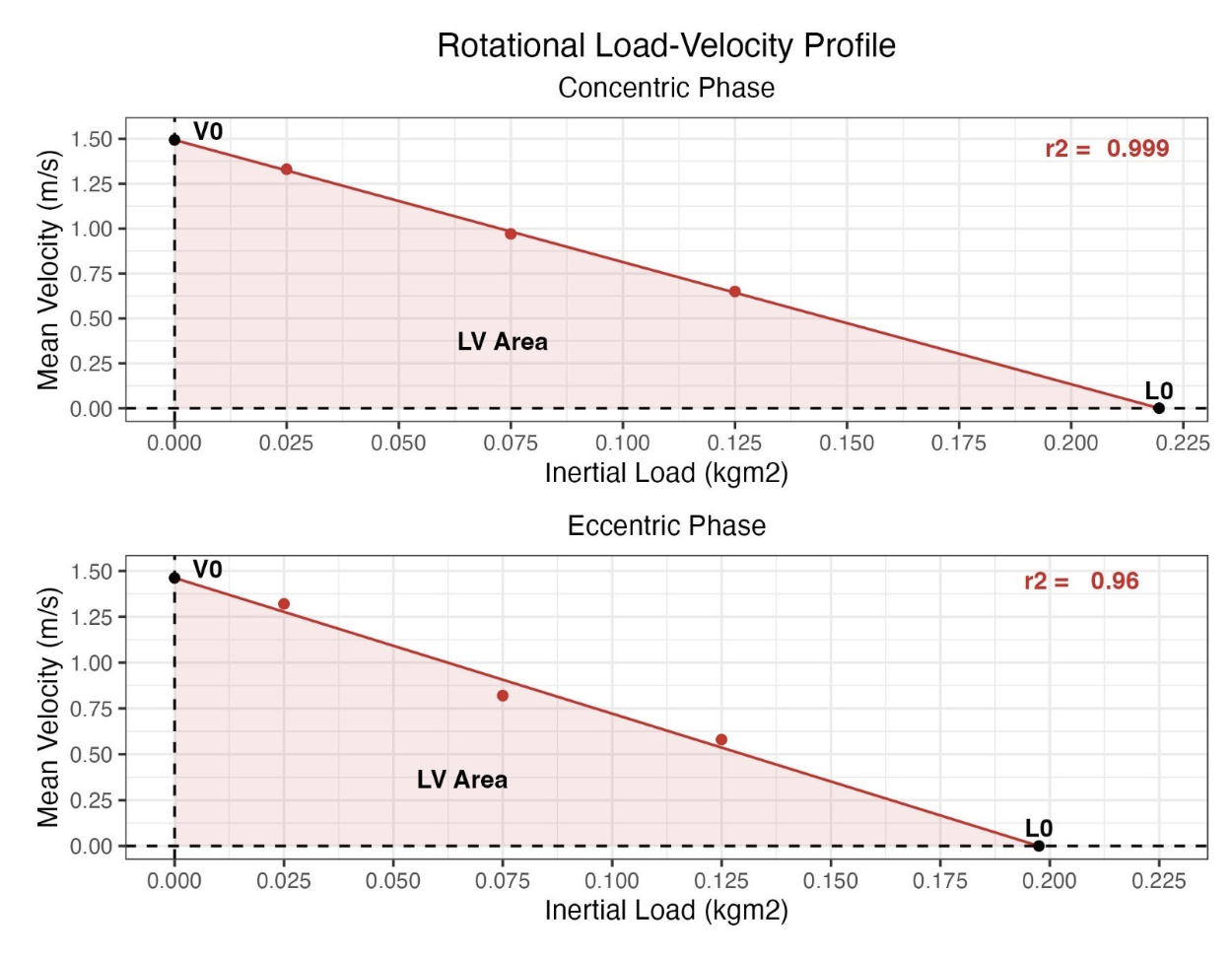
*Figure 1. Load-velocity profiles for the concentric (top) and eccentric (bottom) velocities of a rotational Exerfly exercise. The red dots represent the mean velocity achieved at light (0.025 kg.m2), medium (0.075 kg.m2), and heavy (0.125 kg.m2) inertial loads. V0 represents the theoretical maximum velocity, and L0 represents the theoretical maximum inertial load if conditions were optimal. The LV area represents the area under the Load-Velocity line and can be used as a total measure of performance across all loads. R2 is a measure of the strength of the linear relationship between the inertial load and the velocity achieved*
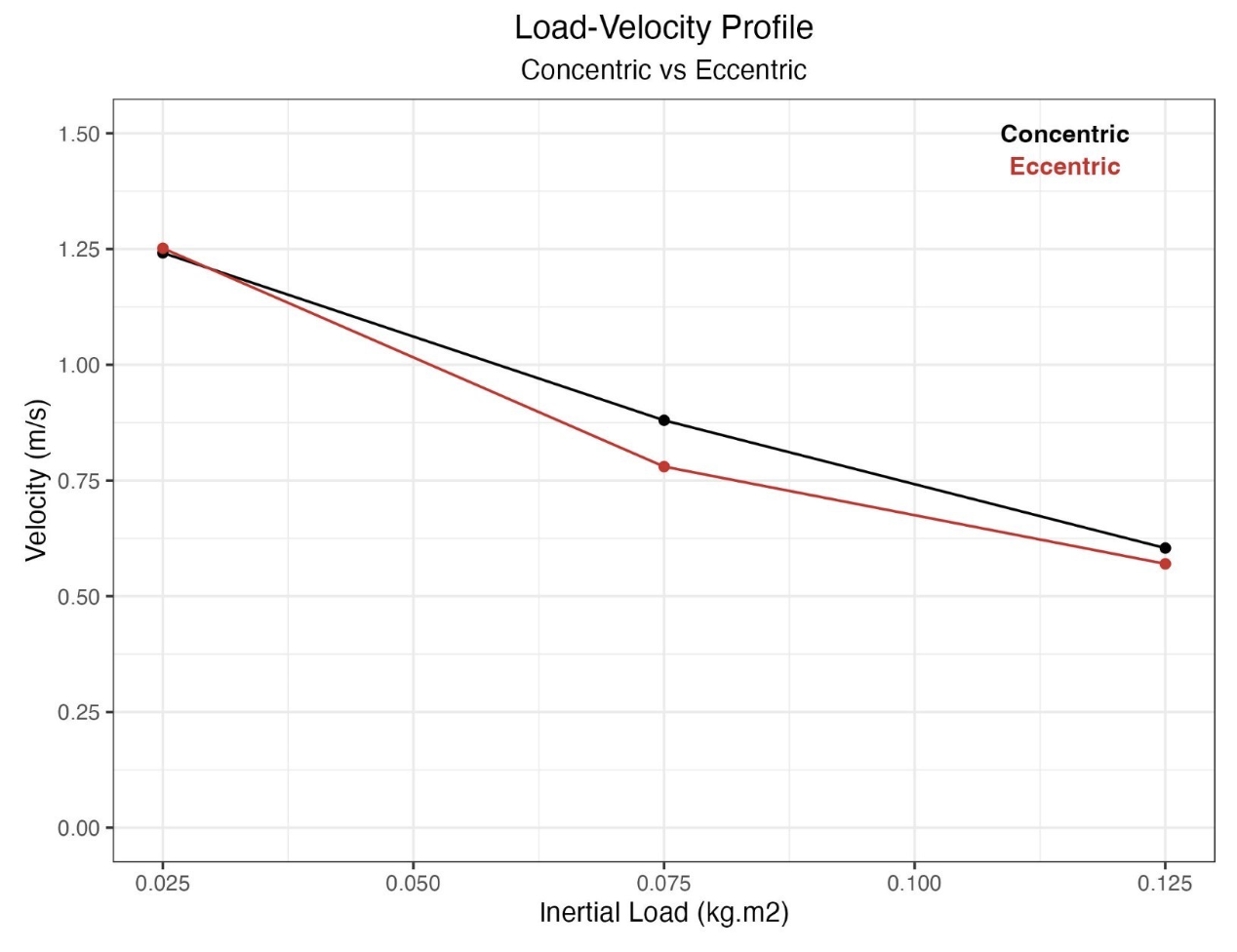
*Figure 2. An overlay of the Concentric and Eccentric Load-Velocity Relationships for a rotational FRT exercise. Combining this objective data with subjective evaluation of the movement strategy used can provide a more complete picture of how an athlete performs and responds to loading across different loads and speeds.*
Profiling can be used in several ways across both concentric and eccentric phases:
- Metrics like theoretical max velocity (V0) and inertial load (L0) can help track changes over time. While these are theoretical values, they provide a simple way to monitor velocity and load changes. Load-velocity area (LV Area) or the area under the trendline represents overall velocity performance across all tested loads. LV Area can be used as a simple measure of overall performance over time, while V0, L0, and the trendline slope can offer insights into how the profile changed.
- These values and the slope can be used to compare profiles across athletes, evaluating performance at light vs medium vs heavy loads. This is particularly useful once you have developed a solid database of normative data across different loads within your athlete population.
- Combining this data with subjective movement evaluations offers deeper insights. For instance, my braking strategy during the eccentric phase changed across loads upon evaluating the videos, how it felt, and the data. At light and heavy loads, I delayed my braking action until braking hard near the eccentric-concentric transition point. But with the middle load, the blend of moderate load and velocity resulted in an early braking action to slow the flywheel, resulting in lower mean eccentric velocities than expected.
Objective and subjective insights from profiling help understand athlete performance at different loads and their movement strategies. This is especially helpful with FRT, which allows varied braking strategies to eccentrically load tissues in different ways.
Summary and Takeaways
Overall, the Rack-Fly can be incredibly useful for profiling and training rotational athletes, within movement patterns that are often not given as much focus as sagittal plane, vertical-based movements such as squats and jumps.
For example:
- High inertia rotational exercises can provide a high-force stimulus across both concentric and eccentric phases. This can help provide a foundation of rotational strength, which is commonly lacking in training programs.
- High-velocity FRT can be used to drive adaptations that underpin speed and power due to the rapid eccentric loading it offers. It also allows you to develop high-velocity force capabilities and the ability to transition between eccentric and concentric phases across a wide range of movement patterns.
- Velocity outputs from the Exerfly App can be used to drive intent during training, which is often key to get the most out of rotational training exercises.
- Combining objective data from the Exerfly App and subjective evaluation of movement strategies can unveil useful insights about how an athlete produces force and responds to eccentric loading across different inertial loads.
Do you have additional ways that you use the Rack-Fly for rotational athletes? Be sure to let us know!
References
- Douglas, J., Pearson, S., Ross, A., & McGuigan, M. (2017). Chronic adaptations to eccentric training: a systematic review. Sports Medicine, 47(5), 917-941.
- Weakley, J., Cowley, N., Schoenfeld, B. J., Read, D. B., Timmins, R. G., García-Ramos, A., & McGuckian, T. B. (2023). The effect of feedback on resistance training performance and adaptations: a systematic review and meta-analysis. Sports Medicine, 53(9), 1789-1803.


